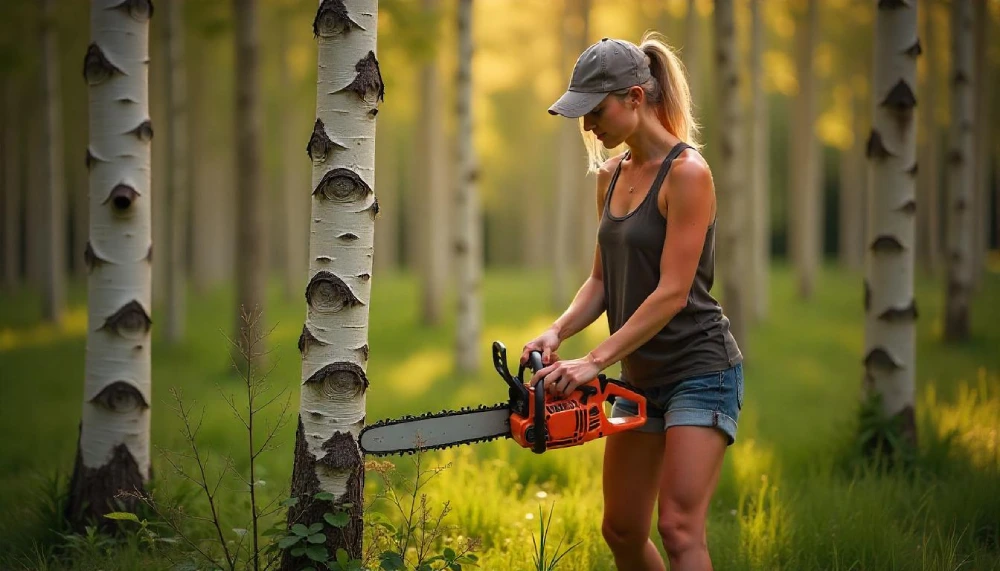If your backyard trees have grown out of control, you’re not alone. Overgrown branches, tangled vines, and leaf build-up can sneak up on even the most attentive homeowners — especially after a long wet season. But clearing them doesn’t have to be exhausting or dangerous. With a solid plan — and the right tools like a chain saw — you can tidy things up without ending the day sore, scratched, or frustrated.
Here’s how to reclaim your outdoor space safely and efficiently.
Don’t Start Blind: Inspect Before You Cut
Before grabbing your tools, take a few minutes to walk around and assess the situation. Look for:
- Dead or dangling branches that could fall unexpectedly
- Vines choking trees or fences
- Low-hanging limbs blocking walkways, windows, or driveways
- Insect nests or animal activity (you don’t want to disturb a beehive mid-cut)
This quick inspection helps you prioritise what actually needs trimming — and what can wait.
Use the Right Tools for the Job
Trying to clear thick limbs with old hand tools is a recipe for frustration (and possible injury). For serious clean-up jobs, using the right power tool reduces strain on your arms and back — and gets the job done faster.
If you’re tackling branches up high, consider using a pole saw attachment or ladder, but make sure you follow safety precautions (more on that below). For lighter work like clearing vines or trimming small limbs, a quality pair of pruning shears or loppers will do the trick.
Work in Sections, Not All at Once
Trying to “do it all” in one go is one of the fastest ways to burn out. Instead:
- Break the task into manageable chunks
- Start with one tree or area of the yard
- Clear that space fully before moving on
This approach not only keeps things manageable, but also gives you a better sense of progress — which makes it easier to stay motivated.
Watch Your Posture (and Pace)
Back pain often comes from awkward angles or rushing through a job. Here’s how to avoid it:
- Bend your knees when lifting or sawing near ground level
- Keep tools close to your body — don’t overreach
- Take breaks every 20–30 minutes, especially if you’re working overhead
- Stretch before and after, especially if you don’t usually do physical labour
Also, listen to your body. If you’re starting to feel fatigued or unsteady, stop and reassess. There’s no benefit to pushing through and risking injury.
Be Smart About Safety
Tree trimming might seem harmless — until it’s not. To keep things safe:
- Wear gloves, long sleeves, and safety glasses
- Never cut directly overhead or while on an unstable surface
- Use a stable ladder with someone nearby to spot you
- Avoid working alone for long stretches
- Don’t work in wet or windy conditions
If you’re not confident handling large branches or using power tools, it’s completely fine to hire a professional — even just for the toughest parts.
Dispose of Debris the Easy Way
Once everything’s trimmed, the clean-up can feel just as overwhelming — unless you have a plan. A few tips:
- Use a green bin or garden bags for smaller clippings
- Stack larger branches neatly near the curb for council pick-up (if available)
- Consider renting a small mulcher to turn debris into garden mulch
- Check your local waste guidelines before burning or dumping
A tidy yard feels even better when you don’t have piles of debris left over.
Make Maintenance Easier Going Forward
Once you’ve done the heavy lifting, staying on top of things is much easier:
- Trim branches before they become a problem
- Do a quick yard walk-through monthly to check for growth
- Invest in reliable tools that make future jobs faster
Backyard maintenance doesn’t need to be a battle — just a matter of having the right system in place and using tools you can trust.
